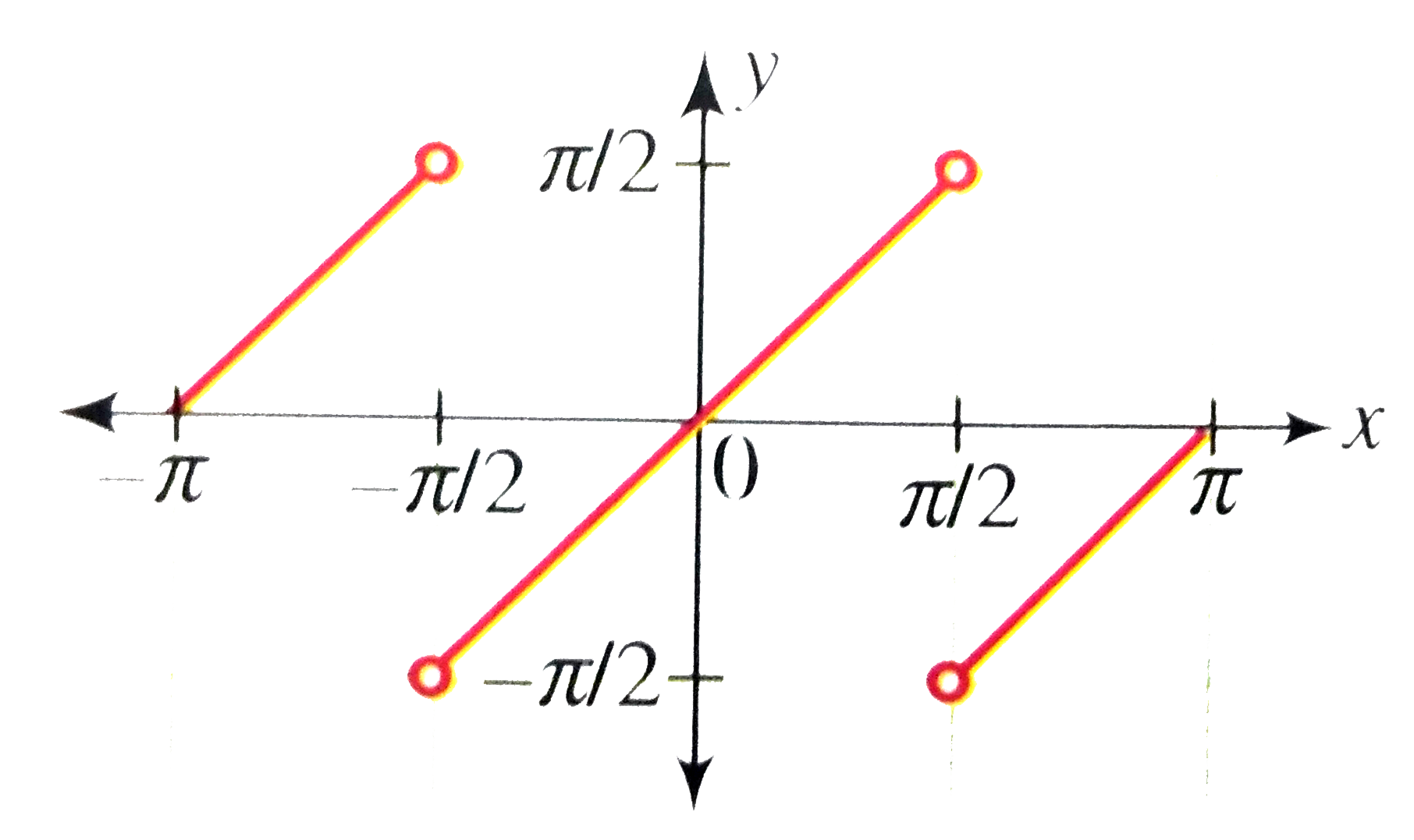InterviewSolution
Saved Bookmarks
| 1. |
Draw the graph of y=tan^(-1)((2x)/(1-x^(2))) |
|
Answer» Solution :We have `y=f(x)=tan^(-1)((2x)/(1-x^(2)))` Domain of f(x) is R-{-1, 1}. Let `x=tantheta in (-PI//2,pi//2)` `rArr""theta=tan^(-1)x` `"Now"tan^(-1)((2x)/(1-x^(2)))=tan^(-1)((2tantheta)/(1-tan^(2)theta))` `=tan^(-1)(tan2theta)` `=tan^(-1)(tanalpha)" where "alpha in (-pi, pi)` Now consider the graph of `y=tan^(-1)(tan alpha)," where "alpha in (-pi, pi)`.  Form the graph, `tan^(-1)((2x)/(1-x^(2)))=tan^(-1)(tan alpha)` `={{:(alpha+pi,-piltalphalt-pi//2),(alpha, -pi//2ltalphaltpi//2),(alpha-pi,pi//2lealphaltpi):}` `={{:(2tan^(-1)x+pi,-pilttan^(-1)xlt-pi//2),(2tan^(-1)x, -pi//2lttan^(-1)xltpi//2),(2tan^(-1)x-pi,pi//2lt2tan^(-1)xltpi):}` `={{:(2tan^(-1)x+pi,-pilttan^(-1)xlt-pi//4),(2tan^(-1)x, -pi//4lttan^(-1)xltpi//4),(2tan^(-1)x-pi,pi//4lt2tan^(-1)xltpi//2):}` `={{:(2tan^(-1)x+pi, -ooltxlt-1),(2tan^(-1)x,-1ltxlt1),(1tan^(-1)x-pi,1ltxltoo):}` `tan^(-1)" is an increasing FUNCTION for "x in R`. THUS, all branch functions in the above are increasing functions. `underset(xto-oo)(lim)(tan^(-1)x+pi)=0,underset(xto-1)(lim)(2 tan^(-1)x+pi)=pi/2` Thus, `tan^(-1)((2x)/(1-x^(2)))` increases form 0 to `pi/2` when x increases from `-oo" to "-1` `underset(xto-1)(lim)(2tan^(-1)x)=pi/2, underset(xto1)(lim)(2 lim^(-1)x)-pi/2" and "2 tan^(-1)0=0` Thus, `tan^(-1)((2x)/(1-x^(2)))" increases form "-pi/2" to "pi/2" when x increases from -1 to 1, intersecting the x-axis at x=0"`. `underset(xto1)(lim)(2tan^(-1)x-[pi)=-pi/2,underset(xtooo)(lim)(2tan^(-1)x-pi)=0` Thus, `tan^(-1)((2x)/(1-x^(2)))" increases form "-pi/2" to0 when x increases from 1 to "oo.` From this information, we can draw the graph of `y=tan^(-1)((2x)/(1-x^(2)))` as folows.  Here y = 0 is na anymptote. |
|